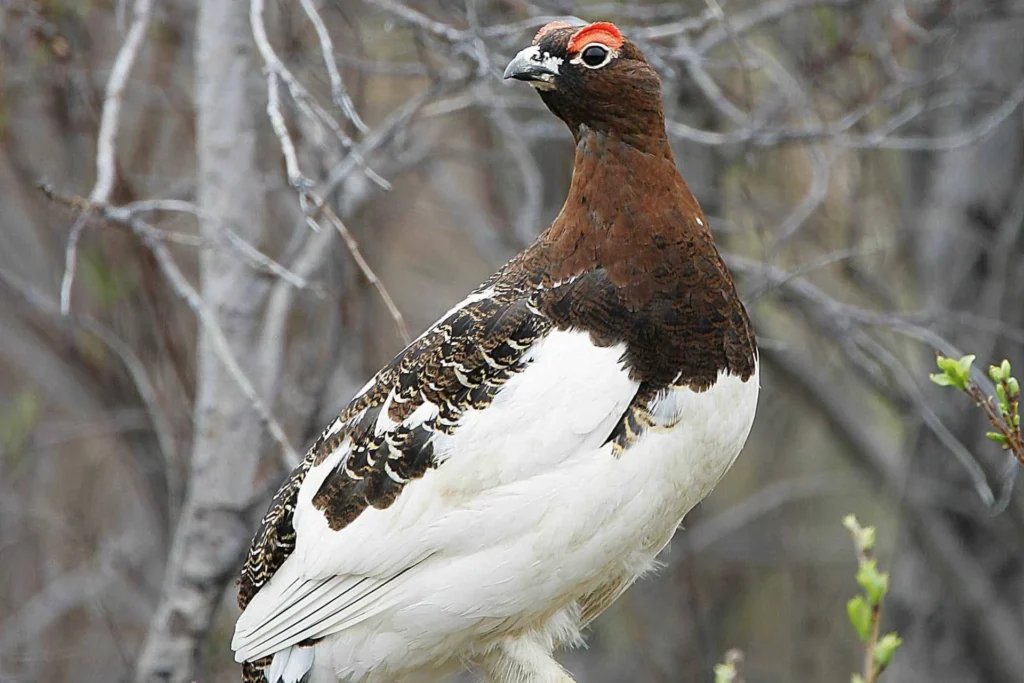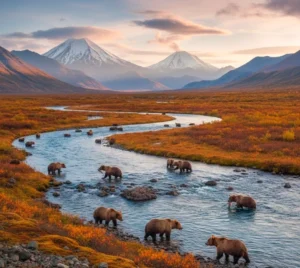Table of Contents
Willow Ptarmigan: Alaska’s Resilient Bird
The Willow Ptarmigan is a member of the grouse family and thrives in Arctic and subarctic climates. It is best known for its ability to camouflage itself by changing the color of its feathers depending on the season, a natural adaptation critical for survival in Alaska’s predator-rich ecosystem.
Quick Facts About the Willow Ptarmigan
Feature | Detail |
Scientific Name | Lagopus lagopus |
Average Lifespan | 2–4 years in the wild |
Body Length | 35–44 cm (14–17 inches) |
Wingspan | 60–65 cm (24–26 inches) |
Weight | 430–810 grams (15–29 ounces) |
Habitat | Arctic tundra, shrublands, boreal forests |
Conservation Status | Least Concern (IUCN 2025), G5 (NatureServe Secure) |
Pictures of the Alaska State Bird
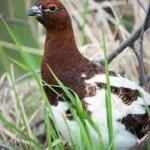
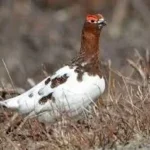
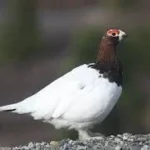
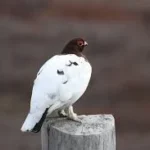
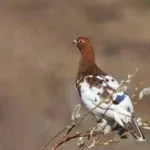
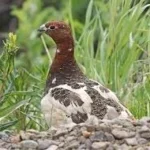
🧬 Adaptations That Make the Willow Ptarmigan Unique
The Willow Ptarmigan is more than just Alaska’s state bird; it’s a biological marvel.
- Seasonal Camouflage: In winter, it turns snow-white for protection. In summer, it adopts a mottled brown color to blend in with shrubs and tundra.
- Feathered Feet: Unlike most birds, it has feathers covering its toes, functioning like snowshoes to walk on snow.
- Vocalization: Males produce a distinctive “guttural croak” during mating season, a common sound in Alaskan spring.
📊 Population and Distribution Insights (2025)
As of the 2025 Alaska Fish and Game Department survey, the estimated Willow Ptarmigan population in Alaska is around 5.4 million, with healthy distribution across Western and Northern Alaska, particularly in:
- Brooks Range
- Yukon-Kuskokwim Delta
- Tanana Valley
- Seward Peninsula
The Willow Ptarmigan is also the most widespread upland game bird in Alaska, comprising 65–70% of the total ptarmigan population in certain regions. In contrast, Rock Ptarmigan make up 25–30%, and White-tailed Ptarmigan represent less than 10% of the population.
📚 Historical and Cultural Significance in Alaska
The Willow Ptarmigan was declared Alaska’s official state bird in 1955, two years before statehood.
It was chosen due to its:
- Abundance across the state
- Strong adaptation to subarctic conditions
- Role in the diet of Native Alaskan communities
Many indigenous groups, such as the Inupiat and Yup’ik, regard the ptarmigan as an important part of traditional subsistence and storytelling.
🌱 Diet and Behavior in the Wild
These ground-dwelling birds have a specialized diet and behavior suited to the harsh climate:
Diet Breakdown
Season | Primary Food Sources |
Winter | Willow buds, twigs, and birch shoots |
Spring | Fresh green leaves, early insects |
Summer | Berries, flowers, and insects |
Fall | Seeds, leaves, buds |
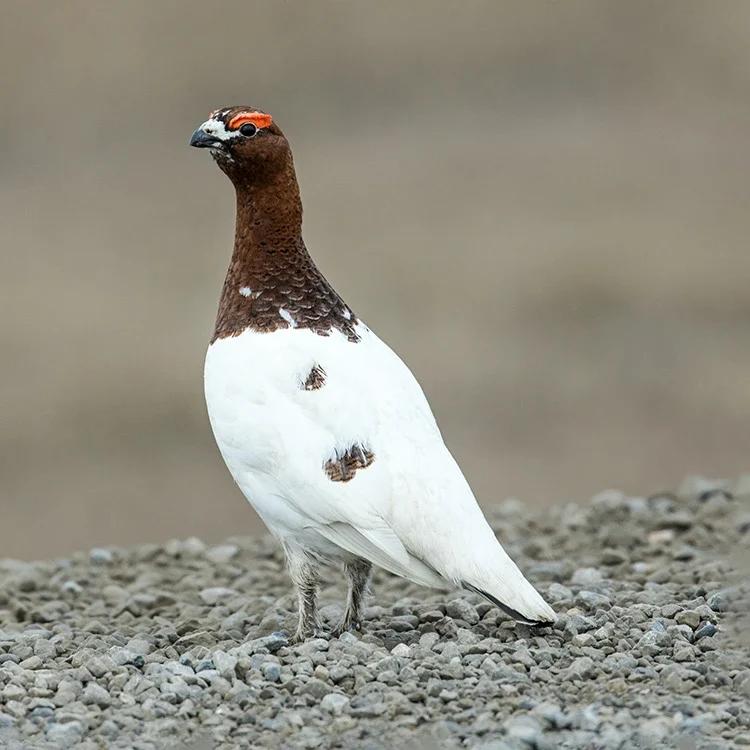
Willow Ptarmigans are monogamous during the breeding season, with males fiercely defending nesting territories. Their clutch size ranges from 4 to 10 eggs per nest, but chick survival rates are low, only about 20–35% survive past 11 months, and even fewer reach maturity. In most years, 65–80% of chicks die before their first birthday.
Adult mortality is also significant, with about 50–60% of adults dying each year after reaching maturity.
🌎 Ecological Role and Predators
The Willow Ptarmigan is both predator and prey. It helps control vegetation and is an essential food source for larger Arctic predators like:
- Red foxes
- Northern goshawks
- Arctic wolves
- Snowy owls
It plays a critical ecological role in maintaining balance within the Arctic tundra food web.
💬 Real-Life Observations and Research (2025 Updates)
The Alaska Department of Fish and Game (ADF&G) continues active research on Willow Ptarmigan, including population monitoring through a wing and tail collection program involving hunters statewide. This program, ongoing since 2011, helps biologists determine age, sex, and productivity of ptarmigan populations across Alaska, which is critical given the state’s vast and difficult-to-access terrain.
More than 12,000 samples from grouse and ptarmigan species have been collected, aiding in understanding population dynamics and informing conservation and management strategies.
Notably, ptarmigan populations exhibit cyclical fluctuations, with numbers sometimes peaking and then dramatically falling within a few years. While these 9–10-year population cycles are well-documented in places like Iceland, they are also suspected in parts of Alaska, though not as consistently recorded.
There is currently no significant long-term population trend in Alaska, and the species remains stable overall.
🔍 How to Spot a Willow Ptarmigan in Alaska
To view these birds in their natural habitat, consider the following locations:
Top Bird-Watching Spots
- Denali National Park – Known for its rich ptarmigan population.
- Nome area – Offers spring displays and photography opportunities.
- Dalton Highway – Remote but perfect for wildlife enthusiasts.
📷 Fun Facts About the Willow Ptarmigan
- ✅ It’s the only grouse species in Alaska that turns white in winter.
- ✅ Both males and females vocalize, rare among grouse species.
- ✅ Alaska is the only U.S. state where the Willow Ptarmigan naturally occurs.
🌐 Willow Ptarmigan vs. Other Ptarmigan Species
Feature | Willow Ptarmigan | Rock Ptarmigan | White-Tailed Ptarmigan |
Habitat | Shrub tundra | Alpine tundra | High mountains |
Size | Largest | Medium | Smallest |
Winter Plumage | All white | White with a black tail | White with a shorter tail |
Range in Alaska | Widespread | Northern Range | Rare and high altitudes |
🛡️ Conservation Outlook in 2025
While still classified as Least Concern (IUCN Red List) and G5 (Secure) by NatureServe, some emerging threats include:
- Climate Change: Shifts in vegetation zones.
- Habitat Disruption: Oil exploration and infrastructure.
- Predator Imbalance: Due to warming, some predators are expanding their ranges.
State-run conservation programs are actively monitoring populations, especially in areas experiencing permafrost thaw and vegetation shifts.
📌 Conclusion
The Willow Ptarmigan isn’t just Alaska’s state bird; it’s a symbol of endurance, adaptability, and the wild essence of the Arctic. As Alaska continues to experience rapid environmental change, protecting species like the ptarmigan becomes ever more crucial.
FAQs
The Willow Ptarmigan changes its plumage seasonally: brown in summer to blend with tundra vegetation, and white in winter to camouflage with snow. It also has distinctive feathered feet to help it walk on snow.
It breeds in Alaska’s birch forests, tundra, and moorlands, and is widespread throughout Alaska. It is also found in northern Europe, Siberia, and Canada.
In summer, it eats leaves, flowers, buds, seeds, berries, and occasionally insects. In winter, its diet consists mainly of willow buds, twigs, mosses, and lichens.
It is sociable in winter, feeding and roosting in groups, and in spring travels in flocks to breeding grounds. The male often defends the young, which is unusual among grouse






